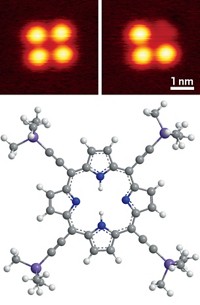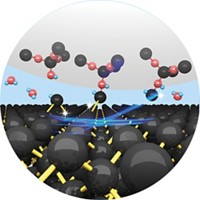Advertisement
Grab your lab coat. Let's get started
Welcome!
Welcome!
Create an account below to get 6 C&EN articles per month, receive newsletters and more - all free.
It seems this is your first time logging in online. Please enter the following information to continue.
As an ACS member you automatically get access to this site. All we need is few more details to create your reading experience.
Not you? Sign in with a different account.
Not you? Sign in with a different account.
ERROR 1
ERROR 1
ERROR 2
ERROR 2
ERROR 2
ERROR 2
ERROR 2
Password and Confirm password must match.
If you have an ACS member number, please enter it here so we can link this account to your membership. (optional)
ERROR 2
ACS values your privacy. By submitting your information, you are gaining access to C&EN and subscribing to our weekly newsletter. We use the information you provide to make your reading experience better, and we will never sell your data to third party members.
Materials
Step-By-Step Surface Assembly
Atomic force microscope attaches reactive polymer chain to a surface, one reaction at a time
by Bethany Halford
November 6, 2006
| A version of this story appeared in
Volume 84, Issue 45
Molecular manufacturing's ultimate goal of assembling molecular machines atom by atom may be a long way off, but a research team in Europe has come a step closer to assembling structures molecule by molecule. In an elegant meeting of chemistry and mechanics at the single-molecule level, Anne-Sophie Duwez, a materials scientist at Belgium's University of Liège, and colleagues use an atomic force microscope (AFM) to covalently attach individual molecules to a surface, making and breaking each bond individually (Nat. Nanotechnol., DOI: 10.1038/nnano.2006.92).
"The ultimate physical limit in the design and fabrication of organic surfaces can be reached using this approach," according to Duwez.
To achieve their mechanosynthesis, Duwez' group grafts poly-N-succinimidyl acrylate onto a gold-coated AFM tip. They then carefully bring this modified AFM tip into contact with a silicon surface functionalized with primary amines. A nucleophilic amine attacks a reactive carbonyl on the polymer, forming an amide linkage that effectively glues the polymer to the surface. Retracting the AFM tip breaks the weakest bond in the system, the Au-C bond that binds the polymer to the tip, leaving the polymer stuck to the surface.
The deposited polymer's remaining succinimide groups can then react with other nucleophilic compounds, Duwez says. They can, for example, "serve as anchoring groups for the one-step immobilization of biological molecules." Delivering and positioning individual biological compounds, she says, would enable the investigation of biological recognition processes.
For high-throughput and massive parallel-patterning applications, the technique can't compete with recent advances in dip-pen nanolithography (C&EN, Oct. 2, page 13), Duwez notes. "Targeted molecule delivery is a delicate experiment based on the interplay between mechanical forces and a chemical reaction at the single-molecule level," she says. "The main advantage of our approach over dip-pen nanolithography is the resolution. The exact number of delivered molecules can be controlled."
Ultimately, Duwez would like to create versatile AFM tips that work like molecular grippers able to build a complex structure, molecule by molecule.





Join the conversation
Contact the reporter
Submit a Letter to the Editor for publication
Engage with us on Twitter